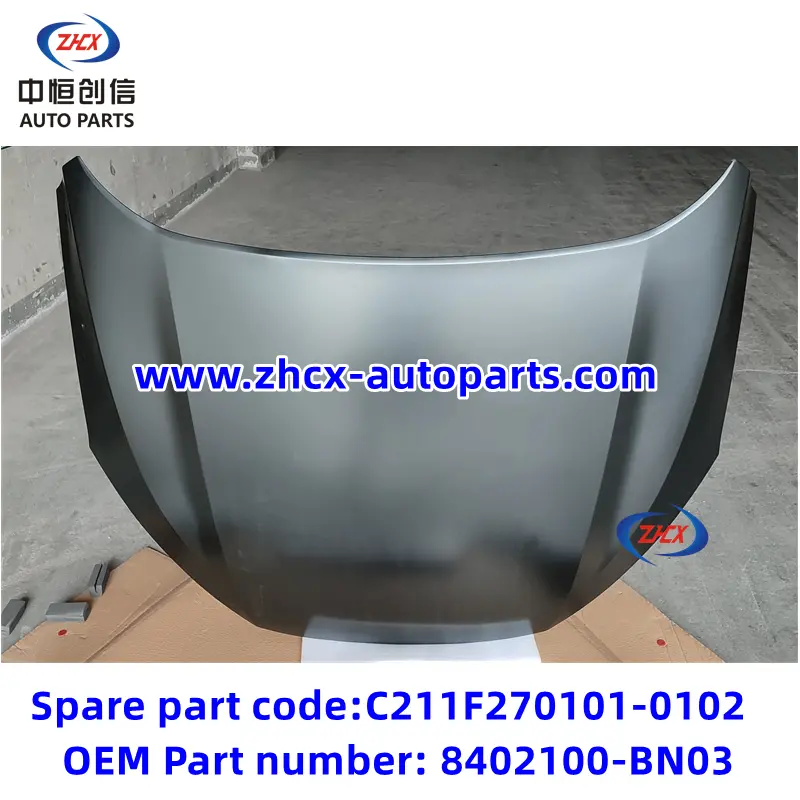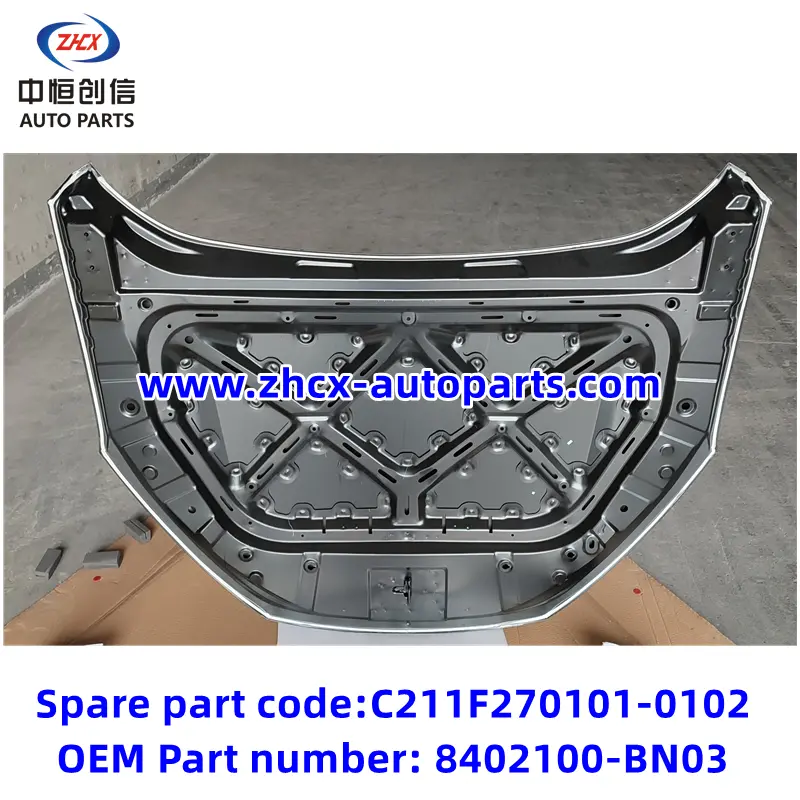This hood is suitable for ChanganEV460
For the engine hood or engine hood, it plays a role in protecting auxiliary equipment such as the car engine, battery, generator, water tank, and power pump. The design and material selection of the engine hood have undergone years of development and improvement to meet different needs and safety standards.
Structure and Materials: The structure of the engine hood is generally composed of an outer panel and an inner panel, with insulation material sandwiched in between. The inner panel plays a role in enhancing rigidity, and its geometric shape is selected by the manufacturer, basically in the form of a skeleton. Common materials for engine hood include steel, aluminum, and composite materials, each with its own advantages and disadvantages. For example, steel is widely used due to its high strength and durability, but it significantly increases the weight of vehicles and is not as corrosion-resistant as other materials. Aluminum and composite materials provide lighter weight and better corrosion resistance, but at a higher cost of 12.
Safety function: In order to ensure the safety of passengers and pedestrians, the hood design considers multiple safety functions. For example, engine hoods are now designed to absorb impacts and cushion potential injuries to improve pedestrian safety in the event of a collision. In addition, safety measures such as engine hood support rods and safety lock hook locking devices are also essential.
Aesthetics and aerodynamics: With the changing trends in automotive design, the design of engine hoods has become more in line with aerodynamics and fashion, defining the visual characteristics of vehicles. Automotive designers are committed to creating engine hoods that complement the overall aesthetics of vehicles, while ensuring their structural integrity is crucial for safety and durability.
Manufacturing process: The manufacturing of engine hoods involves complex processes customized according to the selected materials, including stamping/forming, die casting, composite material stacking, and other steps. These processes ensure the quality and performance of the engine hood.
In summary, the hood is not only an important component of a car, but also reflects the comprehensive application of car design, material science, and safety technology. With the advancement of technology and regulatory requirements, the design and manufacturing of engine covers continue to evolve to provide better performance and safety





















